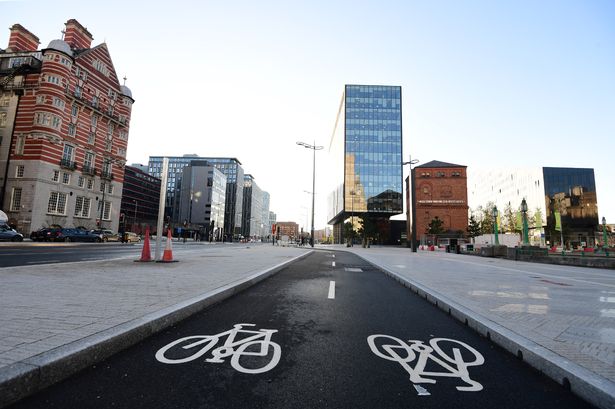Liverpool is still “playing catch up” to rival UK cities when it comes to its cycling infrastructure, but a leading campaigner believes the “penny has now dropped” regarding the need for change.
Simon O’Brien, the Liverpool City Region’s Walking and Cycling Commissioner, said there is now momentum for the improvements he and fellow campaigners have been calling for in recent years. Admitting the city still has a long way to go, he said new investment into permanent lanes, announced earlier this week, was a step in the right direction to getting more people out of cars and on bikes.
Liverpool City Council is set to approve receipt of close to £11 million in funding from Active Travel England. The money will go towards converting three temporary cycling routes into what the Council refers to as “fully segregated active travel corridors.”
READ MORE: The four cycle routes that could be improved under 'positive' £11m plan
The routes included run from Vauxhall Road to Liverpool City Centre, West Derby Road to Liverpool City Centre and Sefton Park to Liverpool City Centre. Around £2 million is being used to improve junctions along Princes Avenue – the subject of a recent major highways scheme that included new walking and cycling facilities.
Contracts for the routes are not expected to be awarded until Spring 2024. Work is scheduled to begin in Summer 2024, according to Liverpool City Council.
Mr O’Brien said making the temporary routes permanent is another step in the right direction. In the last two years, key schemes along The Strand and at Lime Street have been completed, but the cycling commissioner for the region admits there has been criticism over the “missing links” joining this improved infrastructure together across the city.
He added that there “should have been more consultation” and that “lessons were learnt” from the temporary cycle lanes that were introduced in 2020. Not all of the makeshift lanes were roundly welcomed by road users.
The inbound lane of the West Derby Road route was controversially removed following complaints from locals and councillors. This was carried out to the frustration of cyclists and campaigners, with aspects of the route redesigned in the permanent plans.
But Mr O’Brien said that lockdown was a key to boosting the argument for better cycling infrastructure across the city. He said: “The pandemic changed everyone’s thinking.
"It supported that there was a demand. As soon as families felt safe they were out there on roads."
While cars have returned to the roads in greater numbers the segregated cycle lanes could go some way providing greater safety and reassurance. But there is a understanding Liverpool and the wider region needs to go much further.
Mr O’Brien added: “[Liverpool] is still playing catch up to places like Leicester, Manchester and London.
“In some of these cities they are reaching capacity on their road [for cycling infrastructure]. Liverpool is now at a tipping point. The penny has now dropped here.”
Additional projects taking place this month include completing work on improving 30 access points along the Liverpool Loop Line which runs 16km through the city from Halewood to Aintree. A new cycle training facility at Everton Park is also set to be officially opened next month and will use an artificial road network to help children to understand how to navigate different types of junctions.
Mr O’Brien believes the next few years will be key to Liverpool catching up to other cities. He said adding more links between the existing infrastructure will gradually form a city-wide network.
He added: “The next four years will decide if Liverpool will become the forward thinking city it can be. It is about joining up the missing links that the critics say are there.”

